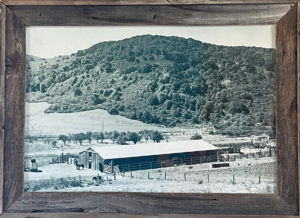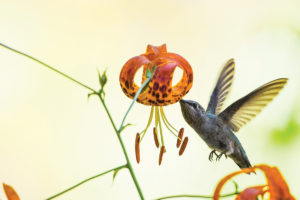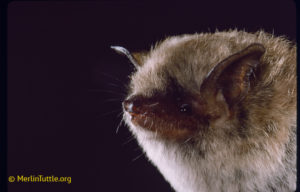At Vasco Regional Preserve, stone balls the size of dinosaur eggs litter the landscape, the winds burrow into stone, and cup-sized pools tucked into sandstone outcrops teem with fairies (of the crustacean variety). The preserve, owned by the East Bay Regional Park District, just recently opened its doors to the public after a trial run in 2005. Find details on guided tours at the end of this article.
Scattered throughout the park, massive sandstone concretions–rocks formed by the accumulation of minerals into dense, compact spheres–dot the hills like spent cannon balls. Elsewhere, uplifts of sandstone known as inselbergs fight a losing battle against the elements, as shown by the depressions and caves carved into their bulk.
In this fairly remote park, California’s special-status flora and fauna have survived and may even come to flourish again. Helped by recent efforts to simulate a natural grazing regime with managed sheep-grazing, native grasses such as creeping wildrye, purple needlegrass, and one-sided bluegrass persist amidst a sea of nonnative annual grasslands. Atop the park’s 1,022-foot peak, an isolated copse of Palmer oaks, typical of chaparral communities in southern and central California, stands sentinel. The elusive San Joaquin kit fox and western burrowing owl duck into ground squirrel burrows, while golden eagles, great-horned owls, and barn owls fly overhead. And as winter rains collect in “tanks”–pools and pockets hollowed into stone–California red-legged frogs, California tiger salamanders, and several species of ephemeral fairy shrimp–among them the longhorned and vernal pool fairy shrimp–complete their life-cycles before the waters evaporate in the sere heat of summer.
The geological features that make Vasco unique drew in our predecessors, too. Several Native American groups, among them the Ohlone, Yokut, Bay Miwok, and Plains Miwok, are thought to have used these lands. The bedrock mortars they worked deep into the rocks and the designs they painted on rock faces remain visible today.
Recently retired EBRPD supervising naturalist Norm Kidder says the magic of Vasco is found in its vistas, the grand, extensive geologic formations, and its incredible wildlife, especially for the raptors that nest in cubbyholes throughout the rock formations. “It transports you to a higher place,” says Kidder. “When you are up there, you feel like you are in another world. The landscape has a magical feeling.”
Already, there’s a growing list of park-goers seeking to experience Vasco for themselves. To get in, you need to be on that list. Because of the sensitivity of Vasco’s resources—rare, state- and federally-listed plant and wildlife species, fragile rock outcrops, and Native American archaeological sites—EBRPD has opened the preserve to the public on a restricted basis through naturalist-led interpretive tour groups limited to 22 people.
In 2006, tours have been scheduled for March 11, 19, and 30, April 8, 14, and 23, May 6, 14, and 27, and June 7, 10, and 18 between 8:30 a.m. and 1:00 p.m., weather permitting. Visitors meet at the Round Valley Regional Preserve’s Laughlin Road staging area and take a chartered bus to the Vasco Regional Preserve parking lot. To cover the costs of the shuttle service, there is a fee of $28 for residents of Contra Costa and Alameda counties and $32 for those living outside of the district. The four-mile hikes are limited to a loop trail that will take you to select tanks and vernal pools, as well as the “Gary was here” rock art site (so-named after a modern-day graffito).
Contact EBRPD’s reservation number at (510)636-1684 to schedule a tour.




